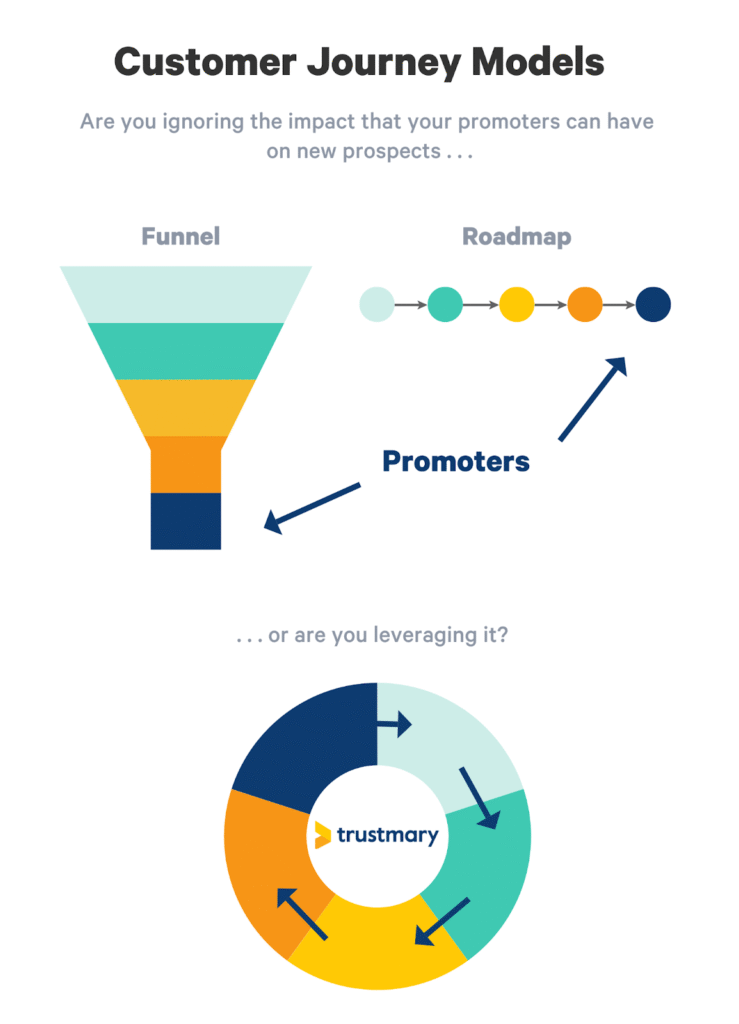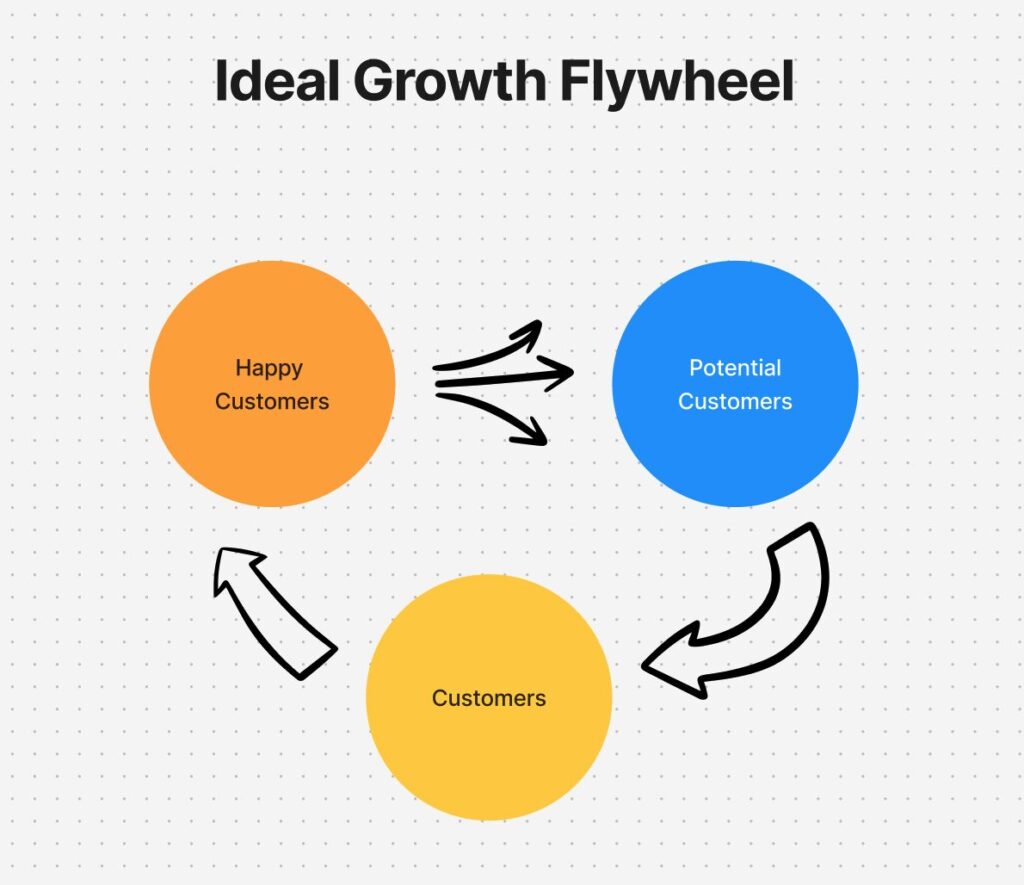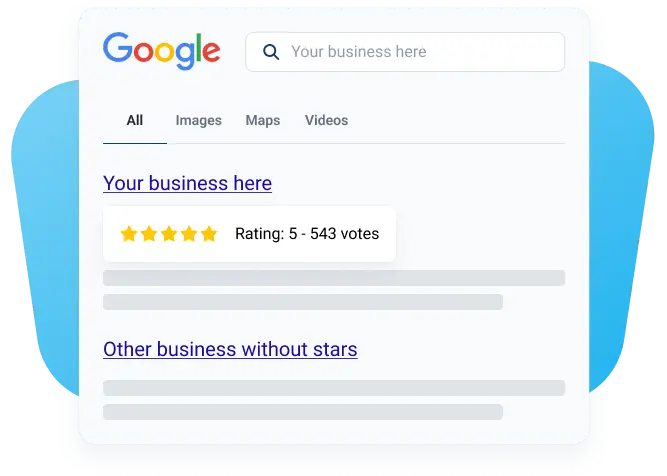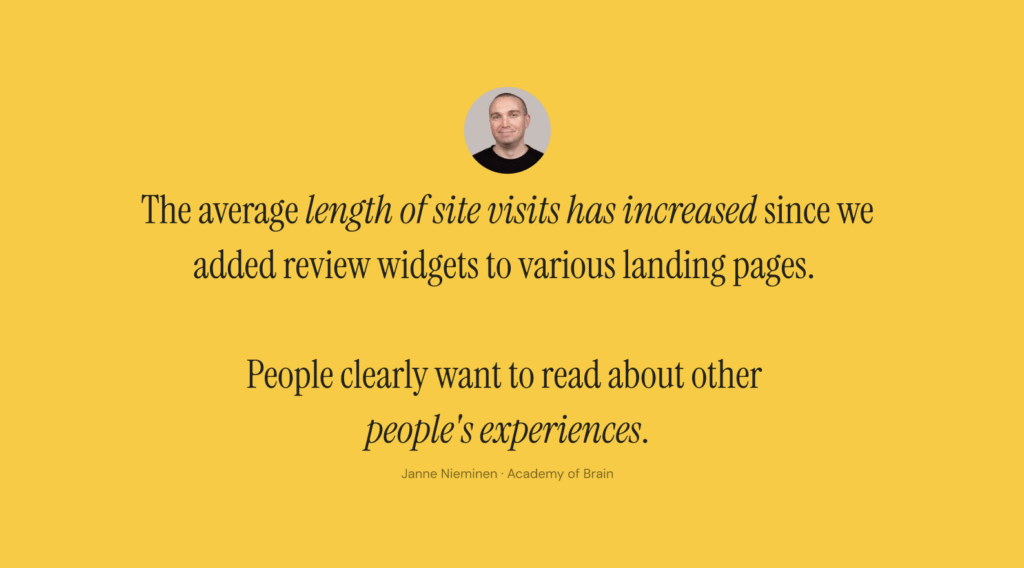Ultimate Guide To Marketing in 2025

If you think the ultimate goal of marketing is to sell products and services, think again. The real goal is to become a trusted market leader, the brand people choose instinctively because it earns their confidence again and again.
In 2026, marketing isn’t about flashy campaigns or algorithmic hacks. It’s about trust-based marketing, a strategy that places transparency, customer experience, and credibility at its core. Companies that thrive are those that don’t just tell stories, but prove them through authentic customer voices.
At Trustmary, we’ve seen this transformation firsthand. Having worked with thousands of companies worldwide, we know that building credibility begins with one powerful ingredient: the voice of the customer.
When you let your satisfied clients speak for you, through testimonials, reviews, and user-generated content, your marketing becomes real, relatable, and scalable.
This guide explores what modern marketing means in 2026, how it has evolved into a trust-driven discipline, and how you can use frameworks, channels, and tactics to turn satisfied customers into your most powerful marketers.
The Shift from Inbound and Outbound to Trust-Based Marketing
Traditional marketing frameworks like inbound and outbound still matter, but they now work best when powered by trust signals and social proof.
Inbound Marketing Channels
Inbound marketing attracts people organically through valuable content and engagement.
It can be either capturing existing demand or demand generation, where companies use interruption marketing to make the target audience aware that they have a problem.
There's a fine line between demand capture and demand gen, but a simple generalisation is that keyword-based marketing is capturing demand.
Demand generation is, for example, using LinkedIn ads where you define the target audience and push your message to that audience.
Examples of inbound marketing channels include SEO, blogging, community building, and word of mouth marketing.
These tactics invite customers in by helping, educating, and solving problems.
Outbound Marketing Channels
Outbound marketing, on the other hand, relies on actively reaching out using one or multiple channels.
- Print ads
- Cold calls
- Email campaigns
The best outbound campaigns of 2026 don’t just promote; they build credibility through social proof, ensuring every message is backed by authentic experience.
Inbound Marketing + Outbound Marketing
- Inbound draws attention through value and consistency.
- Outbound converts attention into conversation and trust.
- Together, they create a cycle where every new customer becomes a potential advocate.
As the marketing world becomes more crowded, credibility is the new currency.
Campaigns that rely solely on exposure without trust no longer scale, but those that amplify verified first-party reviews, third-party reviews, case studies, and testimonials thrive.
The Core Frameworks of Modern Marketing
Today’s marketers still use funnels and flywheels, but the mindset has shifted. The customer is no longer the endpoint of a journey — they’re the driving force that keeps the whole system moving.
1. The Funnel: Still Foundational, Now Fueled by Authenticity
The marketing funnel — from awareness to action — remains one of the most effective ways to map the customer journey. Yet, in the age of trust-based marketing, each stage now includes one key question: “Does this build trust?”
For example:
- Awareness: Your SEO and content marketing attract prospects through helpful insights and transparent messaging.
- Interest and Desire: Customers compare solutions, and verified reviews become decisive. This is where Trustmary’s review tools help brands integrate real experiences directly into landing pages.
- Action: Social proof, guarantees, and ethical design principles reduce friction and encourage conversions.
Frameworks like AIDA and RACE still structure campaigns, but they now emphasize relationship depth rather than raw acquisition volume. Every action feeds long-term credibility.

2. The Flywheel: Continuous Growth through Delighted Customers
The flywheel model turns the funnel into a cycle. It works on the principle that happy customers create momentum by sharing their experiences, referring others, and leaving positive reviews.
Each stage of the flywheel, Attract, Engage, and Delight, is powered by customer voice. The faster your flywheel spins, the more organic reach and trust your brand earns.
This is where tools like review schema markup and automated review collection come in. They ensure your credibility is visible not only to potential customers but also to search engines and reviews in AI searches are featured.
At Trustmary, we’ve seen businesses double their inbound leads simply by embedding video testimonials and automating review requests, letting the flywheel spin on its own.
3. The Trust Loop: 2026’s Framework for Sustained Growth
The next evolution beyond the funnel and flywheel is what we call the Feedback Loop, a continuous feedback cycle where:
- Customers share experiences.
- The brand amplifies those stories.
- New audiences discover the brand through trusted peers.

The loop combines psychology, community, and technology to build credibility faster than traditional campaigns.
It’s not just marketing, it’s a shared experience between brand and audience.
Marketing Channels in 2026: Where Trust Lives
Marketing channels have evolved, but the underlying principle remains: go where your audience feels confident engaging with you.
1. Traditional Channels Still Matter
Offline experiences, events, print, and even direct mail, are making a comeback, powered by personalization and hybrid digital touchpoints. Local trust still plays a huge role, especially in industries like construction and plumbing.
For service-based companies, physical presence combined with verified online reputation drives community-level trust, especially when listings are optimized through Google My Business SEO.
2. Digital Channels: Where Trust Scales Globally
Digital marketing in 2026 is no longer about chasing every new trend, it’s about using the right tools for your audience and showing authenticity across all of them.
Content Marketing and SEO
Your website remains the home base of credibility.
Articles optimized with reviews and transparent data outperform generic keyword pieces. Pair timeless guides with technical optimization and consistent social proof.
However, getting mentioned by other sources, like review sites or industry experts will influence your visibility in AI searches.
As an example, an accounting firm collected and showcased their social proof with Trustmary and set up a review page that is hosted by Trustmary and showcased all their reviews.
As a result, they gained LLM visibility with reviews.
Check out the Beginners Guide to Search Engine Optimization to learn how SEO still underpins trust visibility.
Email Marketing and Automation
Email remains one of the highest-converting channels, especially when personalized.
Modern automation tools ensure messages are timely, relevant, and authentic. The best brands merge AI efficiency with human empathy.
Word of warning: Do not start your emails with "I hope this email finds you well", and do not blast semi-personalized spam to prospects.
AI can and should be used to deliver value and personalization.
Social Media and Influencer Collaboration
Social platforms have become trust hubs where people get a look behind the scenes of companies.
For the past few years, many tech and home renovation companies have started sharing their daily operations on TikTok and Instagram, earning them millions of views and creating a solid viewer base. Even though most of them will never become customers, they might be brand advocates when their friends and colleagues need these services.
In other words, social media marketing isn't about getting conversions from posts, but building an audience.
The same goes for other types of social media content as well.
Whether it’s authentic testimonials or influencer marketing for maximizing social proof, 2026 audiences crave real stories, not sponsored scripts.
The key is collaboration over control, working with creators who truly use your product.
Chatbots and Conversational Marketing
Modern customer journeys often begin with an automated message. Intelligent systems like those explored in chatbot marketing articles now personalize every step, from lead capture to feedback collection.
However, automation must enhance human connection, not replace it.
Local SEO and Niche Optimization
For businesses with multiple locations, multilocation SEO for beginners ensures each branch builds its own trust equity.
Accuracy, consistency, and positive reviews remain key ranking signals in local search.
Having a steady flow of reviews coming in is the easiest way to promote your business locally.
Platform Integration and Marketing Stack
Efficiency in 2026 comes from smart integration. Tools like best small business software and best Pipedrive integrations for sales teams streamline your tech stack, connecting CRM data with customer feedback and performance metrics.
The more unified your tools, the easier it is to maintain consistent trust signals.
Digital Marketing Tactics for a Trust-Based Future
With hundreds of tactics at your disposal, it’s tempting to chase every shiny new platform. But in 2026, sustainable marketing isn’t about being everywhere — it’s about being credible everywhere you are. The following tactics support that mission.
Digital Sales Funnels that Prioritize Transparency
A digital funnel is more than a sales pipeline — it’s an emotional journey. From first impression to loyal advocacy, every step must reinforce honesty and helpfulness.
Modern marketers design funnels that show proof before persuasion: case studies, review snippets, and authentic success metrics take center stage.
Learn how other businesses align their sales tools with trust in 10 Best Pipedrive Integrations for Sales Teams.
Search Engine Optimization and Visibility
Search visibility continues to be foundational. But in 2026, it’s not just about ranking, it’s about earning clicks through credibility.
Using customer reviews and structured data like review schema markup helps your content stand out visually in search results.

Google’s algorithms increasingly prioritize authentic engagement, real people, real feedback, and consistent updates.
Paid Advertising and Ethical Targeting
Paid channels such as Google Ads, social media, and native networks still generate conversions, when done transparently.
The era of over-targeted, invasive ads is over.
Now, smart marketers use first-party data and review-driven creative.
An ad that features a customer testimonial performs far better than one that doesn’t.
Social Proof and Word of Mouth Marketing
One of the strongest signals of trust still comes from other people.
According to 35+ Word of Mouth Marketing Statistics, most buyers rely on recommendations from peers before making decisions.
Trustmary helps brands capture that momentum by automating feedback and turning happy customers into brand advocates.
For campaign ideas, see 3 Word of Mouth Marketing Examples to Supercharge Your Marketing Campaigns.
Email Marketing Reinvented
Email marketing is no longer about generic newsletters. It’s about connection. Advanced segmentation and automation mean you can deliver value at the perfect moment — whether that’s a testimonial from a similar customer or a gentle reminder to leave feedback.
Trust-based brands focus on permission-based communication, ensuring every interaction feels helpful, not intrusive.
Measuring and Analyzing Marketing Success
In the age of automation and attribution, measurement is everything — but trust is the metric that matters most. Traditional KPIs like ROI and conversion rate remain important, but marketers in 2026 also track credibility, engagement quality, and lifetime advocacy.
Key Metrics That Still Matter
- ROI and ROMI: How efficiently are you turning marketing spend into genuine customer relationships?
- Lead Conversion Rate: Are the leads you generate actually a good fit for your brand?
- Cost per Lead (CPL): Combine financial efficiency with qualitative feedback. Low CPL means little if your customers don’t stay loyal.
- Customer Lifetime Value (CLV): The ultimate reflection of trust. Loyal customers cost less to acquire and generate recurring revenue.
- Brand Search Growth: A rising number of people searching your brand name shows recognition and credibility.
- Organic Traffic and Engagement: Analyze whether users stay, interact, and share your content.
To dig deeper into optimizing performance, explore optimizing marketing workflows — a guide to increasing efficiency without sacrificing quality.
Building a Trust-Based Marketing Strategy
Every great marketing strategy begins with empathy. To build a trust-based plan, you need to understand your audience, your brand’s purpose, and how your actions affect both.
Steps to Create a Modern Marketing Strategy
- Set Aligned Goals: Ensure marketing KPIs match business and customer goals.
- Do Research: Know the audience’s needs, motivations, and friction points.
- Define Your ICP: Your ideal customer profile helps focus communication on those most likely to trust and stay.
- Audit Your Credibility: Identify where reviews, testimonials, or transparency could strengthen perception.
- Choose Channels Wisely: Refer to your strategy and test across digital and traditional media.
- Leverage Voice of Customer Data: Use tools like Trustmary to collect structured feedback.
- Track, Iterate, and Scale: Use analytics to reinforce what works — and automate what’s repeatable.
For inspiration, check out Top 3 Marketing Tips for Small Businesses — a concise breakdown of how smaller companies can grow credibility with limited budgets.
Automation and Artificial Intelligence: Working Smarter, Not Colder
In 2026, AI is woven into every layer of marketing — from predictive analytics to real-time personalization. Yet, trust-based marketing demands that automation never replaces empathy.
AI tools streamline processes, but humans remain the curators of authenticity. The brands that win combine data-driven precision with genuine emotion.
If you’re exploring automation for marketing tasks, AI Marketing Tools You Need offers a solid starting point.
Automation helps reduce human error, ensure message consistency, and free teams to focus on creative storytelling. But it should always enhance, not mask, the human connection.
Voice of the Customer: The Core of Trustmary’s Philosophy
User-generated content (UGC) is the currency of trust. It’s the most convincing form of marketing because it’s not coming from you — it’s coming from your satisfied customers.
Through Trustmary, companies automatically gather written reviews, star ratings, and video testimonials, turning the customer journey into a shared story.
Learn how to operationalize this with voice of customer best practices and tools.
When used strategically:
- UGC boosts SEO and conversion rates.
- It increases time on page and engagement.
- It reduces perceived risk for new buyers.
Every company claims they care about their customers — but only those who amplify their customers’ voices can prove it.
Growth Hacking and Continuous Learning
Marketing in 2026 is about experimentation. Growth hacking isn’t just a startup buzzword anymore — it’s a structured approach to learning what works.
The Growth Hacking Cycle
- Hypothesis: Identify what you want to test — a message, channel, or conversion technique.
- Prioritization: Evaluate potential impact versus effort.
- Test: Run controlled experiments with measurable results.
- Analyze: Learn, iterate, and scale what works.
To see how innovative testing can transform results, explore reputation marketing — where businesses turn public perception into measurable ROI.
Each experiment, successful or not, adds clarity. The real goal is not perfection but progress through transparency.
Trust in Action: Industry-Specific Strategies
Trust-based marketing manifests differently across industries, but the principles remain universal — empathy, proof, and performance.
- Construction and Renovation: Digital marketing for construction companies focuses on building visibility and reputation within local markets.
- Plumbing and HVAC: Local marketing for plumbers and how to grow HVAC business articles show how service reliability and online reviews drive bookings.
- Solar Energy: Digital marketing for solar companies highlights transparency in pricing and sustainability as key trust drivers.
- Local Directories: Listing in platforms like local business directory UK builds credibility and discoverability for regional customers.
Across all sectors, the pattern is clear: reputation equals revenue.
Let's look at some practical success stories from different sectors.
Balkonser: Turning NPS Data to Better Decisions and Growth
Balkonser maintains and installs balconies.
In addition to analysing customer feedback, Balkonser uses public feedback and reviews to build trust online.
– Building trust is particularly important to us because we visit people's homes even when they are not there. You don't want to let just anyone in.
Balkonser showcases reviews on its website in review widgets, shares them on social media channels, and displays them on a dedicated landing page.
All publicly provided feedback will also automatically appear on the Trustmary review page, which can be found in search engines and AI searches.
– Fresh Google reviews are important to us for local search engine visibility. Trustmary's survey redirects responders from the thank you page to Google. Having one survey flow is crucial so we can maximize the number of reviews across different platforms, Ahonen says.
This case details how one organization used NPS feedback systematically to realign its services, improve customer experience, and drive growth, showing how voice-of-customer data becomes strategic rather than just informational.
Read the full story → Turning NPS Data to Better Decisions and Growth
Academy of Brain: Voice of the Customer Boosts Marketing & Sales
After starting to use Trustmary, Academy of Brain has more traffic to its website and a notable increase in conversion rates.
– The average length of site visits has increased since we added review widgets to various landing pages. People clearly want to read about other people's experiences.
It has been particularly notable that clients with whom the Academy of Brain does strategy work give higher than average NPS scores. This information is readily available in the reports generated by Trustmary and also guides the company's own development and strategy.
Here we see how capturing authentic customer testimonials and integrating them into marketing and sales workflows led to improved conversion rates, greater trust among prospects, and stronger alignment between departments.

Read the full story → Voice of the Customer Boosts Marketing & Sales
Holistically Rx: Building Trust at Scale
HRx has integrated Trustmary with HubSpot and Slack.
With the integrations in place, the feedback and review collection process became fully automated:
- A patient completes a purchase → HubSpot marks the deal as “Closed/Won.”
- That event automatically triggers Trustmary to send a review request (by email or SMS).
- Patients get an easy, one-click review flow, no logins, no extra steps.
- Reviews come in without the HRx team lifting a finger.
- Dr. Kaufman and the team get instant notifications, so they’re always in the loop.
– It’s a set it and forget it process. Patients automatically get invited to leave feedback, I get notified right away, and everything just works without glitches. That’s rare in healthcare tech.

This case demonstrates how a growing company embedded review-collection, testimonial generation, and review-widget deployment into its processes, enabling high-volume yet authentic trust-signals across multiple touchpoints.
Read the full story → Building Trust at Scale
Vainu: Better Feedback Leads to More Sales
Aamer Hasu, the VP of Marketing at Vainu, says that companies should focus more on building trust with their website visitors to ensure conversions.
– If you have a website without testimonials and without real people praising your product or service, you’re missing out. You can’t establish trust with website visitors without reviews on your website, Hasu states.
Understanding the importance of social proof, Hasu wanted to find a feedback and review solution that was easy to manage internally, offered customization, and didn’t rely on third-party review platforms where visibility can be influenced by money.
– We just want to give our customers the chance to easily provide feedback and for us to display it anywhere, emails, ads, our website… You name it, he explains.
Trustmary proved to be the ideal solution for Vainu’s needs.
In this example, the company used real-time feedback to refine messaging, tailor offers, and ultimately shorten sales cycles, reinforcing how customer voice turns into an actionable marketing and sales advantage.
Read the full story → Vainu: Better Feedback Leads to More Sales
Building a Reputation That Sells Itself
In 2026, your reputation is your most valuable marketing asset — it’s what people say about you when you’re not in the room, and what search engines, social feeds, and customers reflect back to potential buyers. Managing it isn’t a side project anymore; it’s an ongoing discipline that requires transparency, speed, and empathy.
Modern customers expect brands to not only collect feedback but also act on it visibly. Whether you’re a global enterprise or a local service business, your reputation management strategy should be as deliberate as your advertising campaigns.
Explore our comprehensive guide on online reputation management and guide to corporate online reputation management to learn how to monitor, respond, and grow from customer feedback.
Why Reputation Is the Ultimate Growth Driver
Research continues to prove what marketers have long felt: trust outperforms tactics.
- 93% of consumers say online reviews influence their purchasing decisions.
- 88% trust reviews as much as personal recommendations from friends or family.
- Companies with strong reputations see 25% higher customer lifetime value and 2× referral rates compared to competitors with weaker public trust.
In short, the more credible your reputation, the less you have to “sell.”
Your customers do it for you.
The New Rules of Reputation in 2026
- Every experience is public.
With review platforms, social media, and AI-driven summaries of brand sentiment, every customer interaction can shape perception instantly. That’s why it’s no longer enough to react, you must proactively build trust with consistent quality and clear communication. - Transparency builds authority.
Today’s buyers don’t expect perfection, they expect honesty. Responding to negative feedback openly and constructively shows confidence, not weakness.
If you’re uncertain about when a review can or should be removed, read our practical guide on how to remove Google reviews. It explains which reviews violate Google’s policies and how to handle disputes ethically. - Consistency beats perfection.
A five-star average might look good, but an authentic mix of positive and constructive reviews builds more credibility. What matters most is that your brand voice remains steady across every response, polite, transparent, and human. - Speed matters.
Responding quickly shows that your company listens. In a world where customers expect instant interaction, waiting days to reply can make your brand appear detached. Quick, empathetic engagement turns potential crises into opportunities. - Use feedback as growth fuel.
The best brands treat reviews as free, high-quality data. Analyze feedback patterns to identify recurring issues, inspire new product features, or fine-tune customer journeys. Over time, this feedback loop becomes a competitive advantage.
Turning Reviews into a Marketing Engine
When handled strategically, reviews and ratings do more than reflect performance, they amplify your marketing:
- SEO Visibility: Search engines increasingly reward brands that consistently collect and respond to authentic reviews. Using review schema markup ensures your credibility appears directly in search results with star ratings and testimonials.
- Conversion Lift: Landing pages that feature verified reviews or video testimonials convert up to twice as many visitors. The proof is social, not promotional.
- Sales Alignment: Integrate customer testimonials into your CRM and sales presentations — every review is a micro-case study.
- Customer Retention: Publicly recognizing feedback builds community and loyalty, turning buyers into brand advocates.
Trustmary’s review widgets and automation tools make this seamless.
You can collect, display, and analyze feedback in one system, turning your customers’ voices into your brand’s strongest signal of reliability.
Why Deleting Reviews Doesn’t Build Trust
It might be tempting to hide negative comments, but authenticity always wins. Removing criticism can signal avoidance, while addressing it with humility strengthens your reputation.
A professional and empathetic response shows accountability, something that modern consumers value even more than perfection.
When other potential customers see how you handle feedback, they form an impression of your integrity.
In 2026, transparency is the new marketing currency. Every honest conversation, every public response, and every visible improvement adds weight to your credibility.
The Long-Term View: Reputation as a Compounding Asset
Unlike short-term ad campaigns, your reputation appreciates in value over time. Each positive interaction, each thoughtful response, each public acknowledgment of improvement adds another layer of trust. The brands that win tomorrow’s market aren’t just those with the biggest budgets, they’re the ones with the strongest reputations.
That’s the essence of trust-based marketing: earning customer advocacy through action, not persuasion.
The Future of Marketing: Ethics, Transparency, and Technology
Marketing in 2026 balances innovation with integrity. Automation, AI, and analytics are only as effective as the human intent behind them.
Consumers now expect honesty, inclusivity, and accountability. They no longer buy from the loudest voice in the market, they buy from the most credible one.
To sustain that credibility:
- Use technology to enhance experience, not manipulate it.
- Prioritize accessibility and diversity in campaigns.
- Protect data privacy and communicate transparently.
- Let your customers’ words become your strongest marketing channel.
At Trustmary, we believe the future of marketing belongs to those who build trust first and sell second. When your customer voice powers your strategy, every campaign becomes both measurable and meaningful.
FAQ on Marketing
How much should a company invest in marketing?
It depends on what you're trying to achieve and what the competitive situation is in your niche. Generally speaking, investing 2-10% into marketing is a good benchmark.
Prioritize activities that enhance credibility and retention, not just reach.
What is the difference between marketing and sales?
Marketing is building awareness of your brand to potential customers. Sales is converting them into paying customers and generating profit.
Is email marketing still effective?
Yes, email marketing is one of the most incredible marketing tactics.
Which social media platforms should I focus on?
Simple, your social media marketing efforts should be directed to the platforms where your customers are present. Do your market research and track your metrics closely.
Does my business need a blog?
Yes, and you should regularly update it. Blog is an essential part to add to your marketing plan.
Content marketing helps you to do the following:
- Raise awareness
- Answer your visitors' queries
- Convert them into customers
- A blog will also help you with SEO
